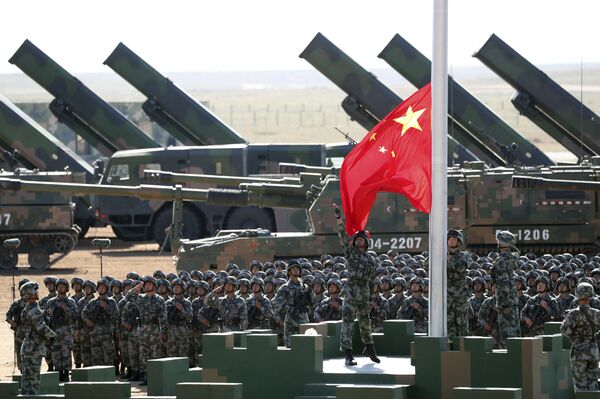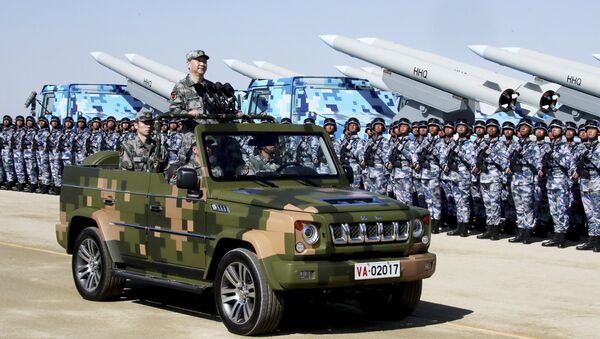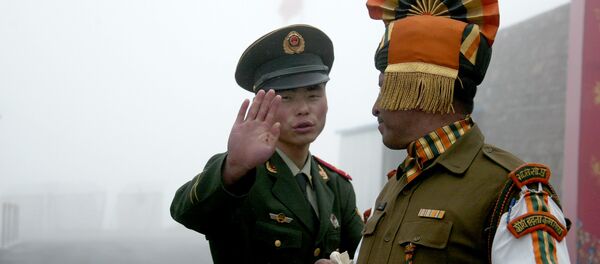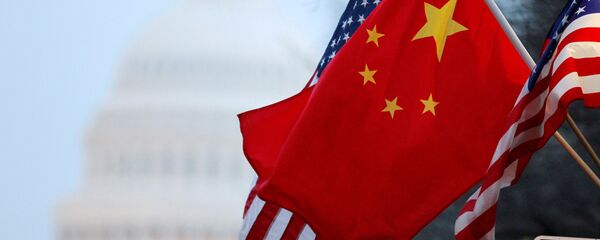China's non-nuclear weapons allow the People's Republic to defeat American and allied ballistic missile defenses in the Pacific region, RIA Novosti contributor Ilya Plekhanov noted, citing a 2017 CNAS report.
"For a long time, it was believed… that any military confrontation between superpowers will immediately result in the exchange of nuclear strikes. But now the opinion of experts has changed," Plekhanov wrote.
The journalist calls attention to the recent demonstration of China's new DF-31AG intercontinental ballistic missile during a parade dedicated to the 90th anniversary of the founding of the People's Liberation Army (PLA).
Besides, according to Pentagon estimates, the People's Republic of China possesses 1,200 short-range missiles (SRBMs, 300-1000 km range), 300 conventional medium-range missiles (MRBMs, 1,000 to 3,000 km) and 300 ground-launched cruise missiles (GLCMs, 1500+ km).
Moreover, "according to the RAND Corporation's report, while Chinese missiles could miss a target by hundreds of meters back in the 1990s, now their accuracy [improved] to 5-10 meters," Plekhanov emphasized.
The journalist noted that if the Pentagon's assumptions are true that actually means that Beijing is capable of taking US forces in the Asia Pacific region out of play.

Needless to say, US military analysts and experts have raised the alarm over the PLA's missile capabilities.
"The greatest military threat to US vital interests in Asia may be one that has received somewhat less attention: the growing capability of China's missile forces to threaten US bases in the region," Thomas Shugart, a senior military fellow at CNAS and a submarine warfare officer in the US Navy, wrote.
"Growing in size throughout this transformation, the Chinese missile force now consists of about 100,000 personnel — by comparison roughly 10 times that of the US' primary ballistic missile force, the US 20th Air Force," the military analyst emphasized.
Shugart argues that a potentially surprising preemptive missile strike by the Chinese "could be consistent with China's claimed overall military strategy of 'active defense.'"
He quoted a 2007 RAND study which claimed that the Chinese military doctrine defines an enemy's first strike as "'any military activities conducted by the enemy aimed at breaking up China territorially and violating its sovereignty'… and thereby rendered the equivalent of a 'strategic first shot.'"
However, according to Plekhanov, the possibility of China launching a bolt-from-the-blue strike is highly unlikely.
"It would take effort to provoke China into launching rocket attacks," the journalist noted.
However, active US military interventions in situations involving Taiwan and the disputed Isle of Senkaku (Diaoyu-doo) may result in serious military escalation, Plekhanov warned, adding that in any event "China will give a [potential] adversary a chance to retreat and only then resort to 'active defense.'"
Still, "the very real possibility of strikes against US bases is changing the course of the game in the region," he believes.
However, some hotheads in the Pentagon continue to send mixed signals to Beijing, running the risk of further deteriorating Sino-American relations.
Adm. Scott Swift, the commander of the United States Pacific Fleet, said Thursday that he would launch a nuclear strike on China if President Trump ordered it.
"The answer would be: Yes," Adm. Scott Swift said, responding to a hypothetical question at a security conference at the Australian National University, ABC News reported.
Commenting on the matter, Vladimir Kozin, a Russian military expert and professor at the Academy of Military Sciences, suggested that this statement could be interpreted as an attempt to put pressure on Beijing.
"The US wants to force China to pressure North Korea over its nuclear program. In addition, it is a typical show of force by the US military," Kozin said.




